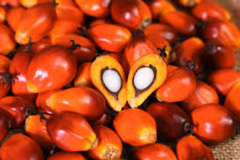1,3-PROPANEDIOL
PRODUCTS
Transform to Sustainable Moisturizer

Propylene glycol of petroleum origin
Method of plant (vegetable) origin is developed and industrialized, however, the high price and strong smell prevent from being substitutable
Dipropylene glycol of petroleum origin
Not developed except for the method of petroleum origin
1,3-Butylene glycol of petroleum origin
Many suppliers has developed the method of plant (vegetable) origin. However, the high price and strong smell are obstacles that block to be substitutable.

1,3-propanediol
Polytrimethylene terephthalate (PTT)
It is known as fiber monomer. Many companies tried to industrialize.
Method of petroleum origin had problems with cost, however, the fermentation method using plant as starting materials succeeded in industrialization.
As the material is effectively produced from not petroleum but plant, which is clearly different from other diols and appropriate for a decarbonized society.
Why Chosen 1,3-propanediol?
Skin Irritation
1,3-propanediol has lower irritation than propylene glycol, dipropylene glycol and 1,3-butylene glycol. It improves safety and compound ratio by replacement.
Textutre
Compared with other diols, non-sticky and compatibility with skin. Glycerin is the main role of moisturizing but has weakness on stickiness. 1,3-propanediol suppresses the stickiness and improves the texture. In addition, it is not assimilated to propionibacterium acnes or malassezia.
Smell
1,3-propanediol (1,3-PDO) is completely odorless and has clear difference in other plant (vegetable) origin propylene glycol or 1,3-butylene glycol.
In terms of BCP
Not only the manufacturers are widely scattered in Asia, North-America and Europe, but also starting materials are diverse such as palm, rapeseed and corn.